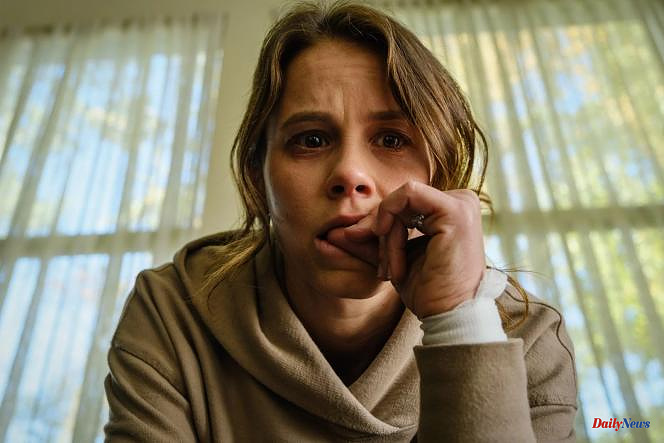Smile opens with a long scene that instills its horror in dribs and drabs: Rose Cotter (Sosie Bacon), who works in a psychiatric unit, talks one-on-one with a patient in distress. She claims to be persecuted by an entity that only she sees: a being who often changes appearance and smiles at her before threatening her with death. Subject to a crisis in the middle of the session, the patient freezes into a smile before committing suicide. For all intrigue, Smile conjures up a contagious psychosis that has so far struck nineteen people and is expected to claim another victim soon. As Rose's mental health deteriorates, the psychiatrist suffers from the same illness as her suicide patient. Abandoned by her job and by her boyfriend, she decides to go back to the origins of the evil.
The filmmaker Parker Finn, who signs his first feature film, is not the first to use the smile as the physical expression of evil. In front of Smile, we obviously think of Joker (who was already inspired by The Man Who Laughs) or the perfectly diabolical way in which Jack Nicholson smiled in The Shining (Stanley Kubrick, 1980) before incarnating the Joker in his turn (Batman , by Tim Burton, 1989). Parker Finn, who is inspired by his own short film Laura Hasn't Slept (2020), explains: "I was curious to know if we could manage to use a comforting facial expression to create panic in the spectators . »
Narrative minimalism
This smile is the mark of a filmmaker who bases his horror on simple effects, a less is more that has already proven itself: a work of space, often empty, which surrounds his heroine, reduced effects to the smallest portion, and the apprehension instilled in the spectator to see a smile take shape on the face of a character. If Smile does not revolutionize anything, and above all does not seek to do so, its narrative and formal minimalism is to be welcomed, at a time when stories continue to tense muscles and lose their spectators in a labyrinth of vain intelligence.
Despite its two hours, Parker Finn's film has the modesty of an emaciated B series, where the horror depends less on a riot of violence than on shot-reverse shot work, where the appearance of a simple smiling gradually deteriorates the spirit and the body of the heroine, who slowly switches from the status of a psychiatrist to that of a hopeless clinical case. The real subject of Smile - and, in so doing, of the horror film - would be what anguish does to the body: it distorts it, damages it, isolates it, tarnishes it, and the actress Sosie Bacon devotes herself entirely to this work of degradation. Smile extends a vein that perceives the horror film as an intensification of the Gothic narrative (heredity, madness, ghost, haunted house, fire), the story of a woman's face that slowly dissolves into the image.












